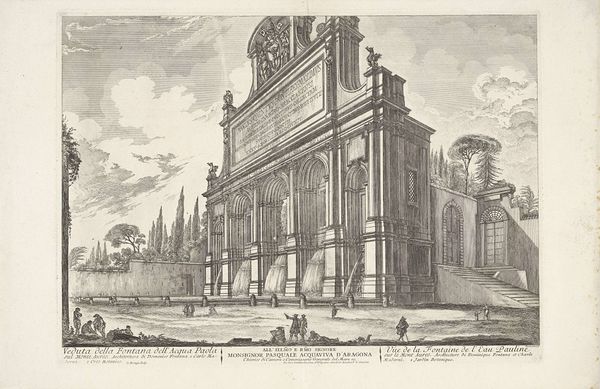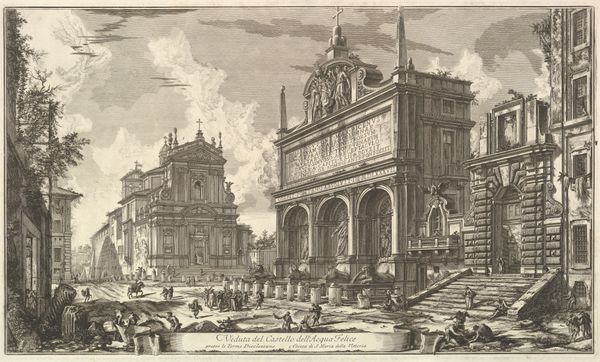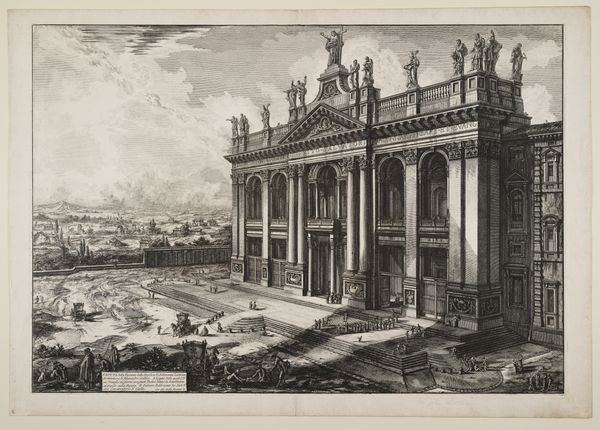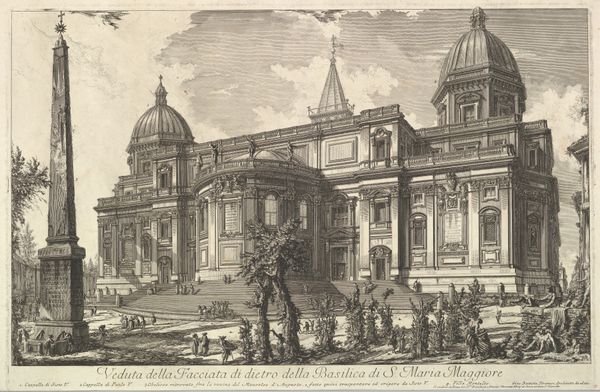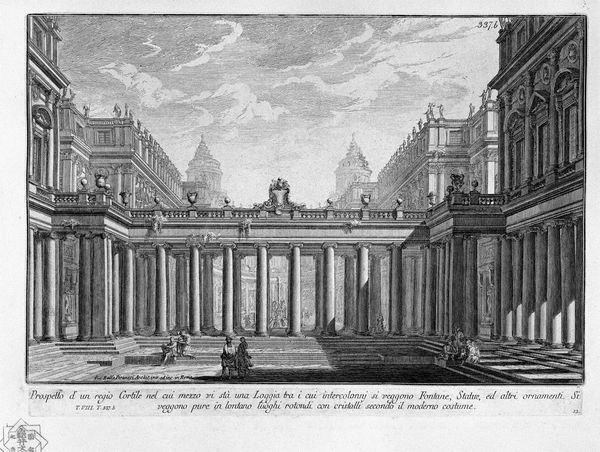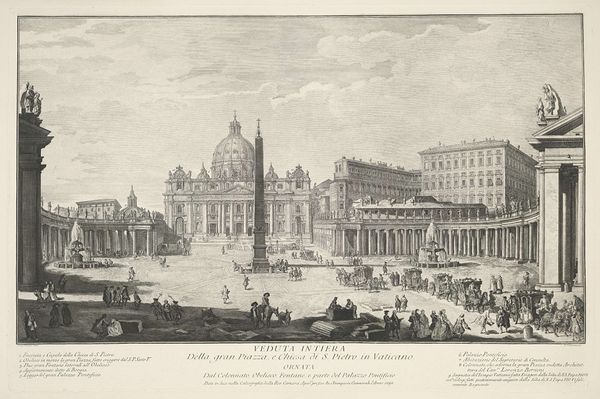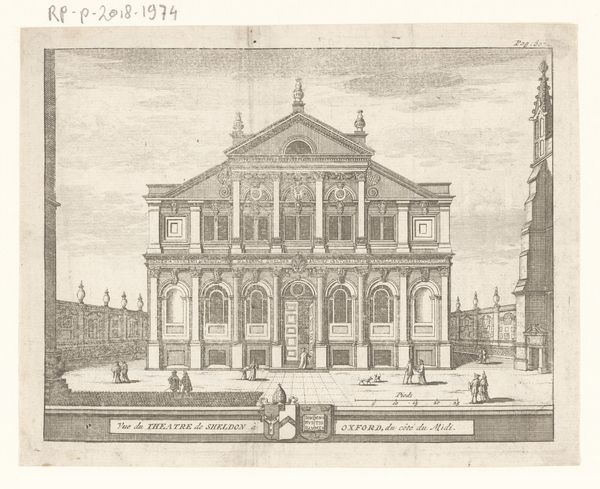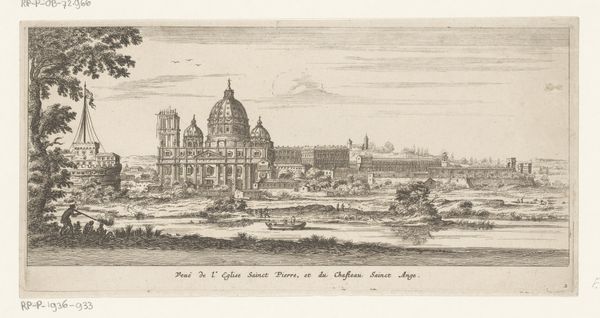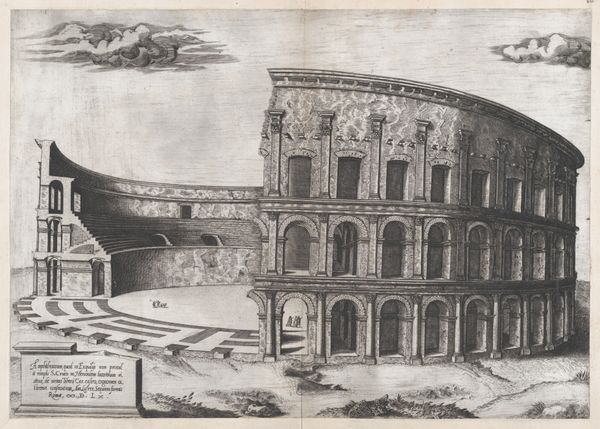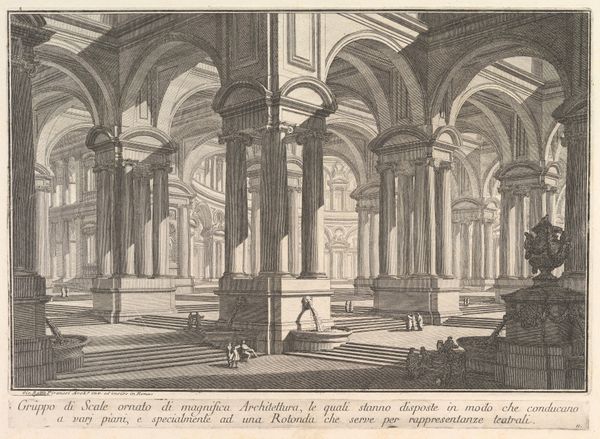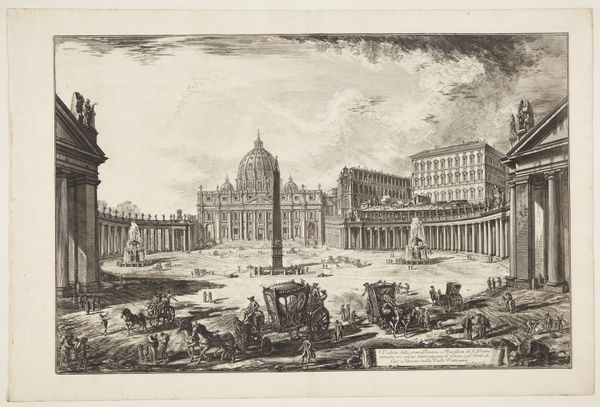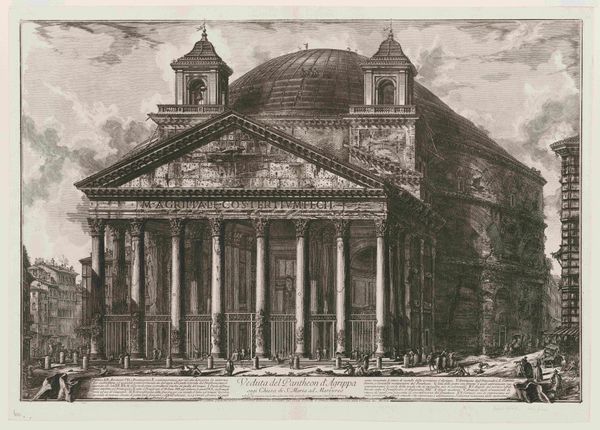
Ancient Roman forum surrounded by porticoes, with loggias, some of which communicate with the Imperial Palace and others with the prisons... (Foro antico romano circondata da portici, con logge, alcune delle quali si uniscono al Palazzo Imperiale...), from "Prima Parte di Architettura, e Prospettive" 1745 - 1755
0:00
0:00
drawing, print, etching, engraving, architecture
#
drawing
# print
#
etching
#
perspective
#
romanesque
#
line
#
cityscape
#
history-painting
#
engraving
#
architecture
Dimensions: Plate (Image): 9 9/16 × 14 3/16 in. (24.3 × 36 cm) Plate (Inscription): 11/16 × 14 3/16 in. (1.7 × 36 cm) Sheet: 13 1/4 × 19 7/16 in. (33.7 × 49.4 cm)
Copyright: Public Domain
Editor: This engraving by Giovanni Battista Piranesi, created sometime between 1745 and 1755, depicts an imagined, expansive view of the Ancient Roman Forum. It's incredible how Piranesi uses line to convey such immense scale. What do you see when you look at this piece? Curator: I see a powerful demonstration of structure and form. The intricate line work, the use of hatching and cross-hatching, is not just descriptive; it constructs the entire architectural space. Notice how the varying line weights suggest depth and volume, creating a complex interplay of light and shadow across the imagined surfaces. Editor: That's a good point. The contrasting line weights really make it look three-dimensional, especially in the arches. Curator: Precisely. Also, observe the repetition of architectural elements. The columns, arches, and porticoes create a rhythmic pattern that leads the eye deeper into the composition. This manipulation of form isn't just about representing architecture, it’s about establishing an aesthetic and philosophical relationship between space, line, and the viewer's gaze. Editor: So it’s more about the arrangement and relationship of shapes than an actual representation of Rome? Curator: While representation is certainly present, it's crucial to acknowledge Piranesi’s focus on manipulating spatial perception using calculated linear arrangements, rather than factual replication. How does the composition make you feel? Editor: Slightly overwhelmed. There's so much detail, but it also feels ordered. All those horizontal and vertical lines must have taken ages to carve into the metal plate. It's interesting to consider the visual labour involved. Curator: Indeed. Piranesi masterfully employs line to dictate form and evoke feeling, transcending mere depiction and exploring profound structural and aesthetic possibilities. Editor: Thinking about the line work and perspective as structural elements has completely changed how I see this piece!
Comments
No comments
Be the first to comment and join the conversation on the ultimate creative platform.

